
views
Factoring
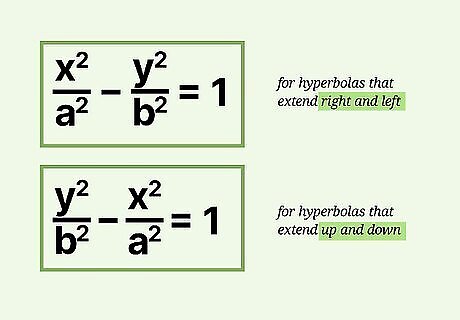
Write down the equation of the hyperbola in its standard form. We'll start with a simple example: a hyperbola with the center of its origin. For these hyperbolas, the standard form of the equation is /a - /b = 1 for hyperbolas that extend right and left, or /b - /a = 1 for hyperbolas that extend up and down. Remember, x and y are variables, while a and b are constants (ordinary numbers). Example 1: /9 - /16 = 1 Some textbooks and teachers switch the position of a and b in these equations. Follow the equation closely so you understand what's going on. If you just memorize the equations you won't be prepared when you see a different notation.
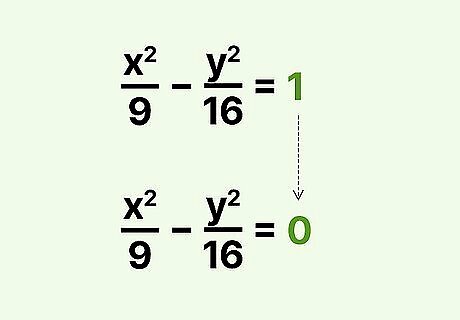
Set the equation equal to zero instead of one. This new equation represents both asymptotes, though it will take a little more work to separate them. Example 1: /9 - /16 = 0
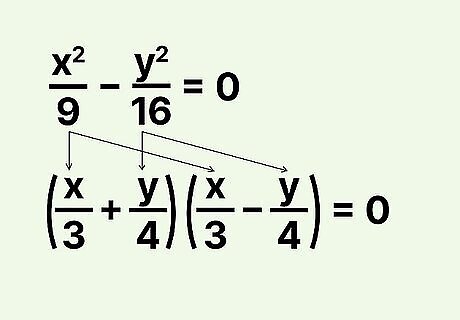
Factor the new equation. Factor the left hand side of the equation into two products. Refresh your memory on factoring a quadratic if you need to, or follow along while we continue Example 1: We'll end up with an equation in the form (__ ± __)(__ ± __) = 0. The first two terms need to multiply together to make /9, so take the square root and write it in those spaces: (/3 ± __)(/3 ± __) = 0 Similarly, take the square root of /16 and place it in the two remaining spaces: (/3 ± /4)(/3 ± /4) = 0 Since there are no other terms, write one plus sign and one minus sign so the other terms cancel when multiplied: (/3 + /4)(/3 - /4) = 0
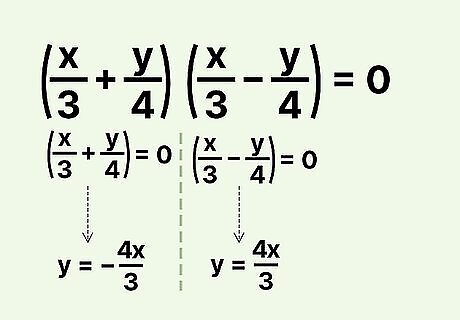
Separate the factors and solve for y. To get the equations for the asymptotes, separate the two factors and solve in terms of y. Example 1: Since (/3 + /4)(/3 - /4) = 0, we know /3 + /4 = 0 and /3 - /4 = 0 Rewrite /3 + /4 = 0 → /4 = - /3 → y = - /3 Rewrite /3 - /4 = 0 → - /4 = - /3 → y = /3
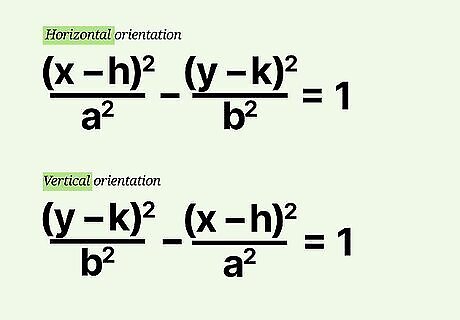
Try the same process with a harder equation. We've just found the asymptotes for a hyperbola centered at the origin. A hyperbola centered at (h,k) has an equation in the form /a - /b = 1, or in the form /b - /a = 1. You can solve these with exactly the same factoring method described above. Just leave the (x - h) and (y - k) terms intact until the last step. Example 2: /4 - /25 = 1 Set this equal to 0 and factor to get: (/2 + /5)(/2 - /5) = 0 Separate each factor and solve to find the equations of the asymptotes: /2 + /5 = 0 → y = -/2x + /2 (/2 - /5) = 0 → y = /2x - /2
Solving for Y
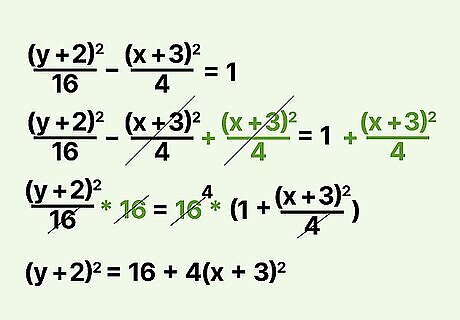
Write down the hyperbola equation with the y term on the left side. This method is useful if you have an equation that's in general quadratic form. Even if it's in standard form for hyperbolas, this approach can give you some insight into the nature of asymptotes. Rearrange the equation so the y or (y - k) term is on one side to get started. Example 3: /16 - /4 = 1 Add the x term to both sides, then multiply each side by 16: (y + 2) = 16(1 + /4) Simplify: (y + 2) = 16 + 4(x + 3)
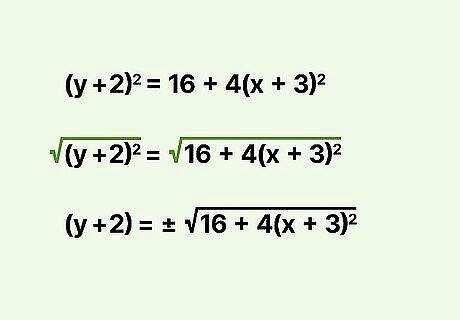
Take the square root of each side. Take the square root, but don't try to simplify the right hand side yet. Remember, when you take the square root, there are two possible solutions: a positive and a negative. (For example, -2 * -2 = 4, so √4 can be equal to -2 as well as 2.) Use the "+ or -" sign ± to keep track of both solutions. √((y + 2)) = √(16 + 4(x + 3)) (y+2) = ± √(16 + 4(x + 3))
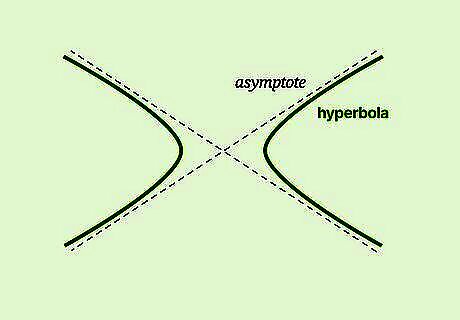
Review the definition of an asymptote. It's important that you understand this before you continue to the next step. The asymptote of a hyperbola is a line that the hyperbola gets closer and closer to as x increases. X can never actually reach the asymptote, but if we follow the hyperbola for larger and larger values of x, we'll get closer and closer to the asymptote.
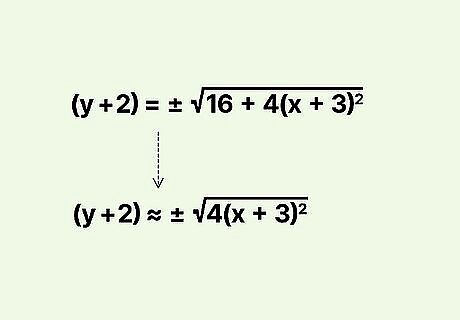
Adjust the equation for large values of x. Since we're trying to find the asymptote equation now, we only care about x for very large values ("approaching infinity"). This lets us ignore certain constants in the equation, because they contribute such a small part relative to the x term. Once x is at 99 billion (for example), adding three is so small we can ignore it. In the equation (y+2) = ± √(16 + 4(x + 3)), as x approaches infinity, the 16 becomes irrelevant. (y+2) = approximately ± √(4(x + 3)) for large values of x
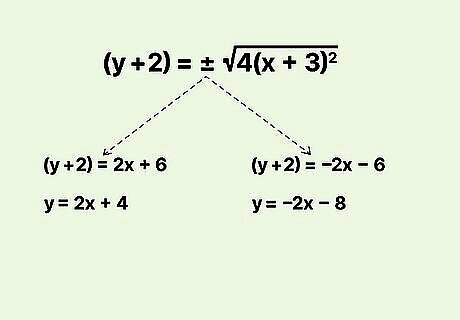
Solve for y to find the two asymptote equations. Now that we've got rid of the constant, we can simplify the square root. Solve in terms of y to get the answer. Remember to split the ± symbol into two separate equations, one with + and one with -. y + 2 = ±√(4(x+3)^2) y + 2 = ±2(x+3) y + 2 = 2x + 6 and y + 2 = -2x - 6 y = 2x + 4 and y = -2x - 8




















Comments
0 comment